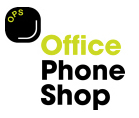
Photo via Roland Tanglao/Flickr
The global VoIP services market continues to grow year on year.
Valued at $73 billion in 2015, this is an increase of 5% on the previous year and predictions, according to Diane Myers of IHS Technology will see continuous growth over the next five years.
As businesses move away from traditional voice connectivity, the uptake of cloud-based solutions increases. Organisations are turning towards a combination of SIP trunking and hosted PBX systems as they look to Unified Communications as the future.
Utilising IP telephony (the collective term for VoIP services) allows users to take full advantage of a range of features that you would traditionally find on a PBX system. This includes call transfer, forwarding and hold, call conferencing, mobile office plus many more. The service is feature rich and is easily scalable.
SIP (session initiation protocol) is an IP telephony signalling protocol for VoIP calls and is the most widely used protocol in IP telephony. SIP supports all the features of traditional telephony such as call transfer, on hold and call forwarding. Calls between one or more users at the same time are possible, with disconnection of a user allowed at any time during the call. In addition, users can join the call during a session and operators can enable or disable video connection at any time.
SIP trunking is used as an addition or alternative to existing ISDN BRI or PRI lines. It allows users to make full use of an IP phone system.
Businesses today operate using a variety of different technologies, adopted as they evolve. Most operate separately, for example, voice calls using traditional phone lines, emails, fax machines, live chat, video conferencing, mobile office solutions. Unified Communications (UC) brings all of these together. It allows users to manage all their communications’ needs in one place, being able to access their accounts from any device in the same way as if they were operating a PC.
Predictions expect more businesses to employ VoIP services, as well as IP PBX systems, cloud-based solutions and SIP trunking.

